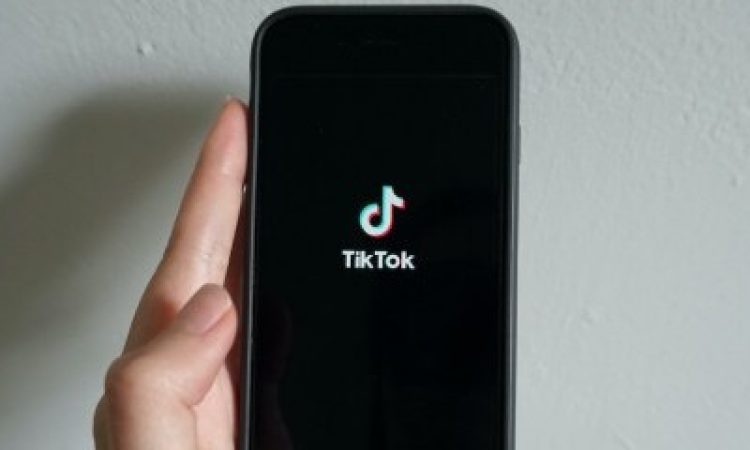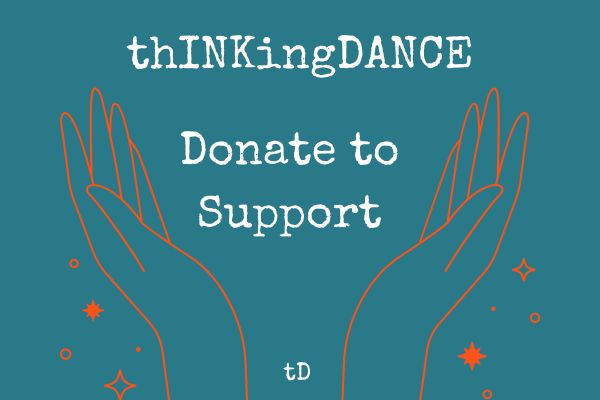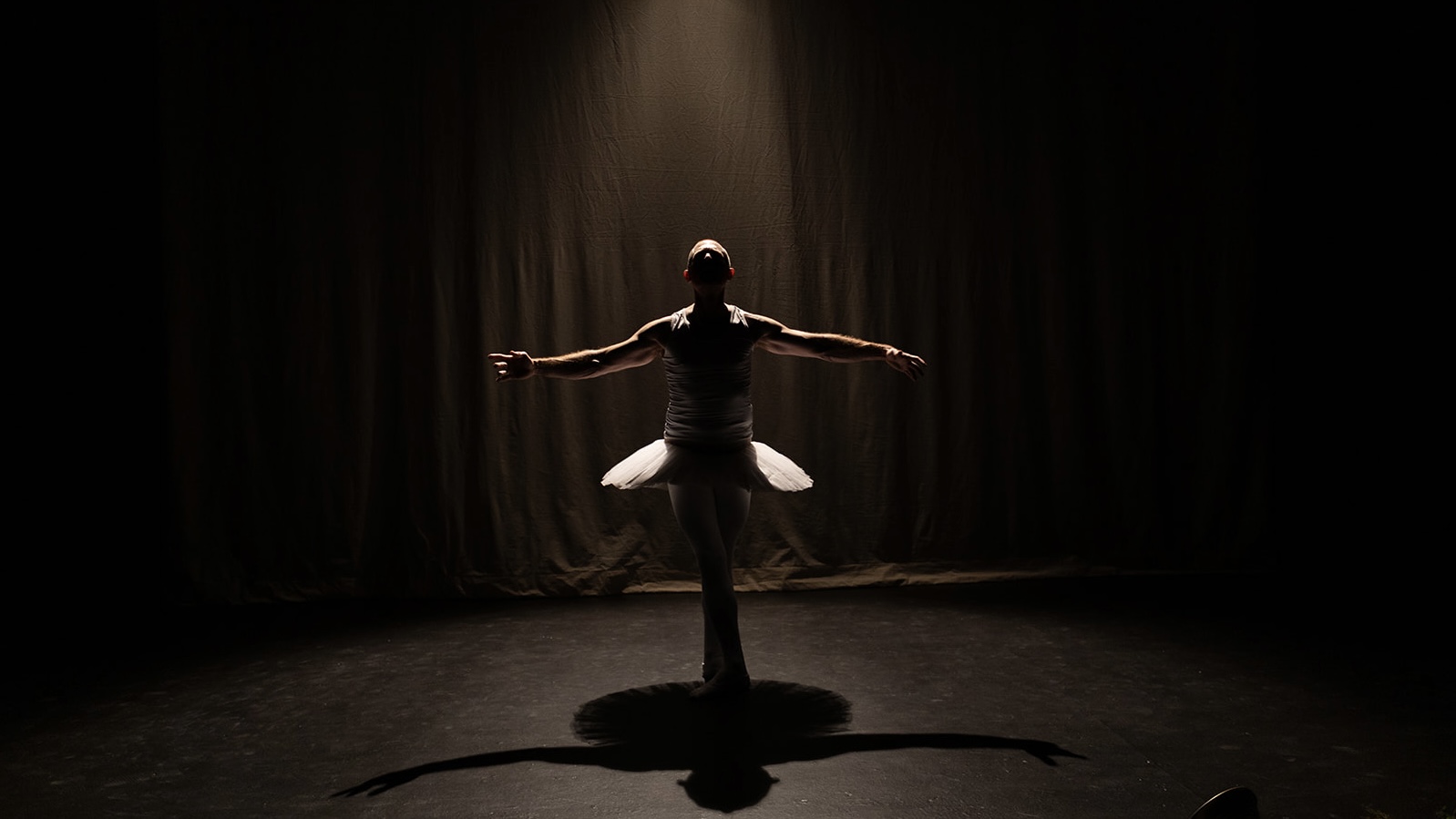Every Sunday afternoon, a girl who looks to be about thirteen walks into the backyard visible from my apartment window. After carefully adjusting her hair, she settles her phone on the edge of the staircase and spends twenty minutes or so filming TikTok videos.
I can tell they’re TikTok videos because the dances that circulate on TikTok—an app in which users upload fifteen- to sixty-second videos set to popular snippets of sound—utilize a highly regularized and legible lexicon of movement, a lexicon within which I have (slowly, haltingly) begun to immerse myself.
There is, for instance, the familiar sway of the pelvis as each hand, balled into a fist, comes to meet the hip crease. There’s throwing it back, a movement in which the dancer’s torso is held at a low angle, a body roll interrupted and accentuated by a lifted leg. There’s the move in which one hand circles rapidly in front of the lips—slightly more complicated than the move in which both index fingers point toward the sky. And, of course, there’s the woah, perhaps the quintessential TikTok step, in which one fist makes a subtle arc towards the shoulder while the other punches down toward the opposite hip.
Though varied, these movements share certain qualities. They tend to be frontal and stationary, designed to be presented in two dimensions within a small rectangular screen. While some involve the whole body, the most popular movements are concentrated in the arms, only rarely traveling below the constantly-swaying hips. Often, they are embodiments of lyrics (rocking arms at the word “baby,” palms facing out at the word “wait”), evocative of the illustrative gestures of story ballets as much as the music-video poses they often resemble.
Taken as a whole, the technique employed on TikTok is rigorous yet accessible: its precise movements can be performed in virtuosic, rapid succession, but they are also simple enough to be learned even by those with little dance experience. Once you have viewed even a few TikTok videos, the movements become recognizable. On my (socially-distanced) walks through Morningside Park, the path seems to be teeming with young kids subtly marking through TikTok dances as they walk with their families, the ghost of a woah just barely discernable.
TikTok technique is easily identifiable in part because it was created for an app that values efficient reproducibility. Each dance is available to be cut up and rearranged, neatly altered for the latest trending musical hook (like the chorus of “Savage,” the lyrics of which supplied the title for this article). The resulting movement is a far cry from the living room improvisations that are popular on Instagram. While many Instagram videos traffic in authenticity, suggesting that spontaneous, noodling movements can signal something distinctive about the dancer, TikTok doesn’t care much about uniqueness. Yes, people put their own spin on familiar dances, but the primary intent is to copy and repeat.
In this way, the rapid scroll of the TikTok feed can feel like a procession of simulacra, endless copies with no original. New dance trends seem to emerge spontaneously out of the ether, smoothly mutating and regenerating as they are picked up and performed by different users on the app. The swift pace of this creation and transmission can be intoxicating, but also potentially harmful as it often obscures a clear sense of ownership, history, and cultural specificity. White dancers blithely appropriate movements that come from Black American culture (e.g. the dab, the dougie). And although young Black dancers have choreographed some of the app’s most popular dances, it is often white girls who anesthetize and popularize the dances, and who go on to become the app’s most successful influencers. (A more thorough look into this process was undertaken by the New York Times when reporting on Jalaiah Harmon, who choreographed the immensely popular “Renegade.”)
In its disregard for traditional notions of authorship and its tendency to collage movements into a pastiche of disparate styles, TikTok dancing aligns comfortably with postmodernism. Indeed, optimized to circulate as a churn of surfaces that makes no claims of accessing any transcendent truth, the technique seems uniquely emblematic of postmodern aesthetics. Of course, “postmodern dance” is a well-established stylistic category, and its associated movement looks nothing like what is being created on TikTok. But the types of dancing typically called postmodern—the works of Yvonne Rainer, Lucinda Childs, or Steve Paxton for instance—often hew more closely to the ideals of modernism than postmodernism. Like modernist visual art and literature, they tend to utilize abstraction and mundane or pedestrian material, driving toward an imagined essence of the medium by grappling with formal concerns rather than narrative ones.
What comes of labelling TikTok dancing as postmodern? For one thing, using such an academic term might remind people that popular dance forms are just as available for rigorous analysis as concert dance. Perhaps utilizing this term will encourage people to see the performances that take place on TikTok as a part of a longer history of dance—for instance, they might notice how TikTok dancing fits into a long legacy, outlined by Brenda Dixon Gottschild and others, of white dancers rendering their indebtedness to the innovations of Black artists invisible. And maybe (maybe!) taking TikTok dancing seriously as an art form embedded within a specific aesthetic and historical context will encourage people to recognize the work being done by the young creators on the platform as real labor.
Labelling TikTok dancing as postmodern also offers me the illusion of having reached a stable conclusion, allows me to imagine that I have wrangled this contradictory and messy phenomenon into a more comprehensible form. In fact, my sense of the technique is slippery and easily lost. When I spent a few days away from the app, I returned to find myself entirely disoriented, unable to digest any of the countless dances that were being performed. Some days I find embodying the technique to be enjoyable and playful, other days I find it flat and deadening. On those days, I see the relentless smiles and blandly sexy hip-pulses as depressing proof of the hegemony of the “Young-Girl” (a genderless, ageless icon of thoroughly embodied consumer culture).
So, nowhere simple to land with this one. As I write this I’m only barely resisting the temptation to get back on the app, imagining my endless scroll to be “research.” Even as its larger significance remains hazy, a dance form that generates new offshoots every few hours is difficult to look away from.






